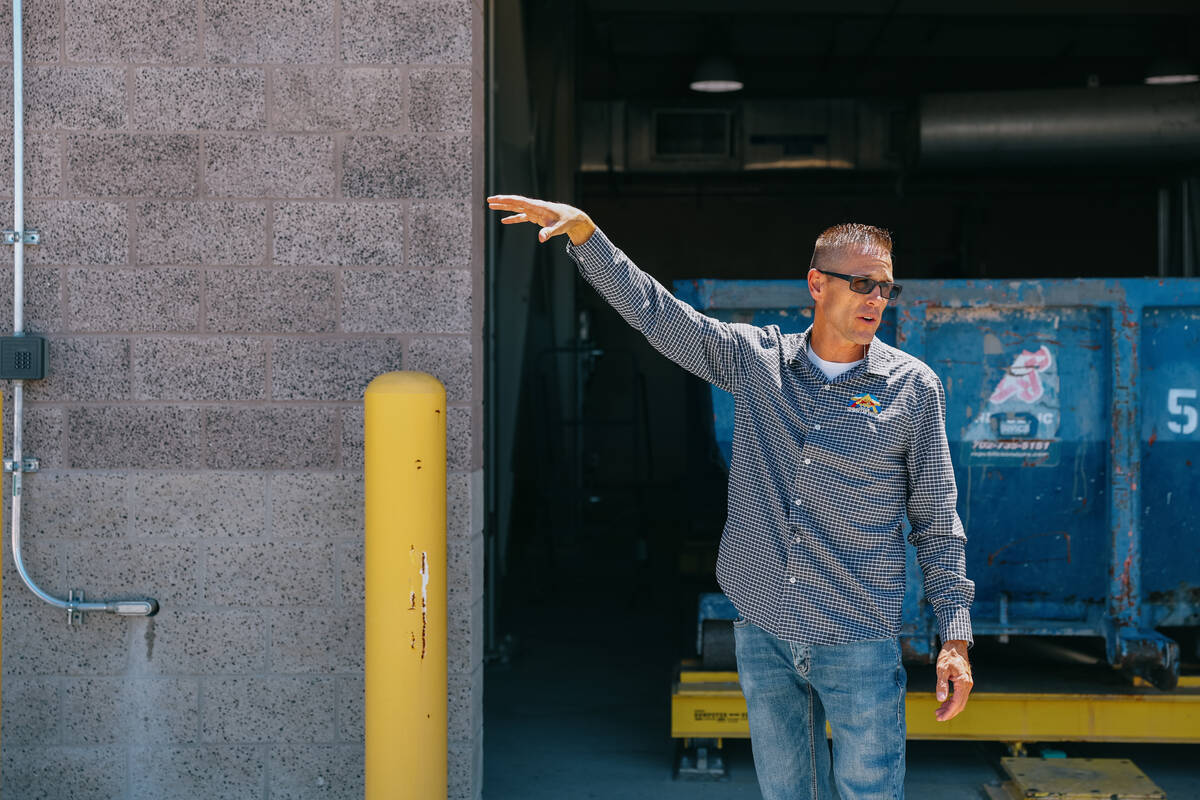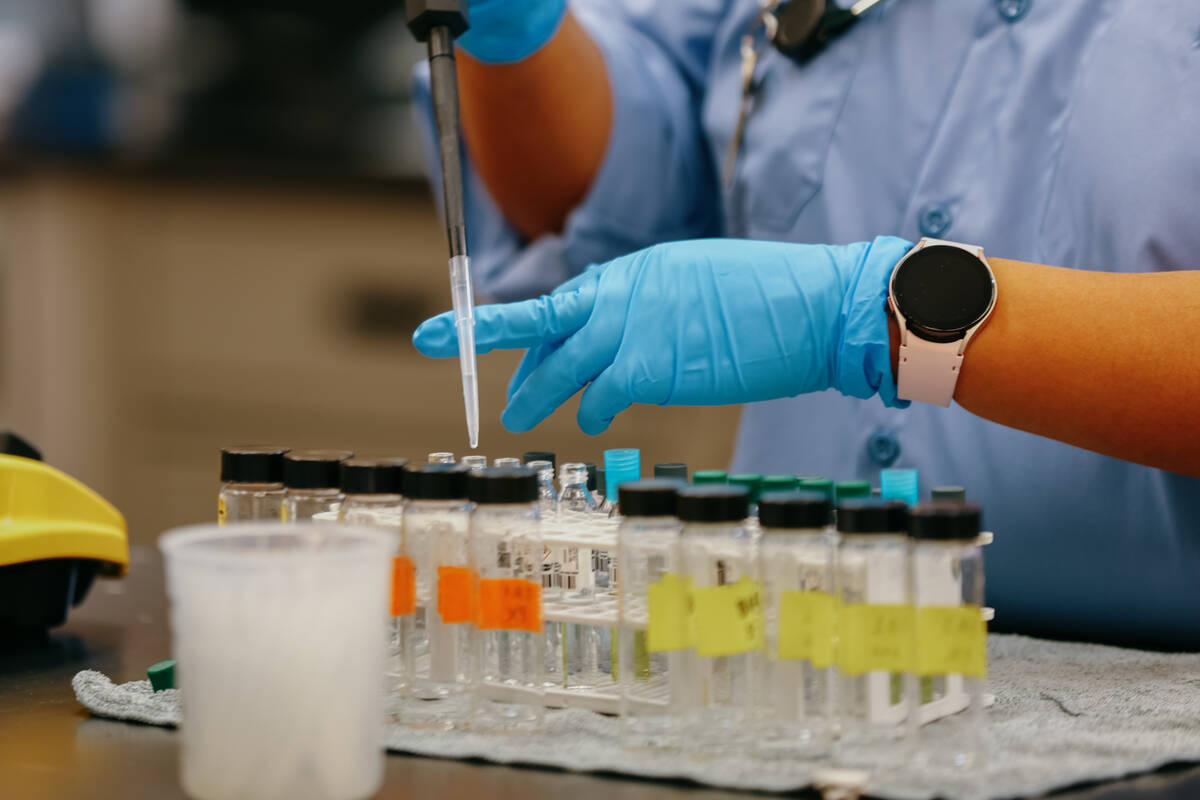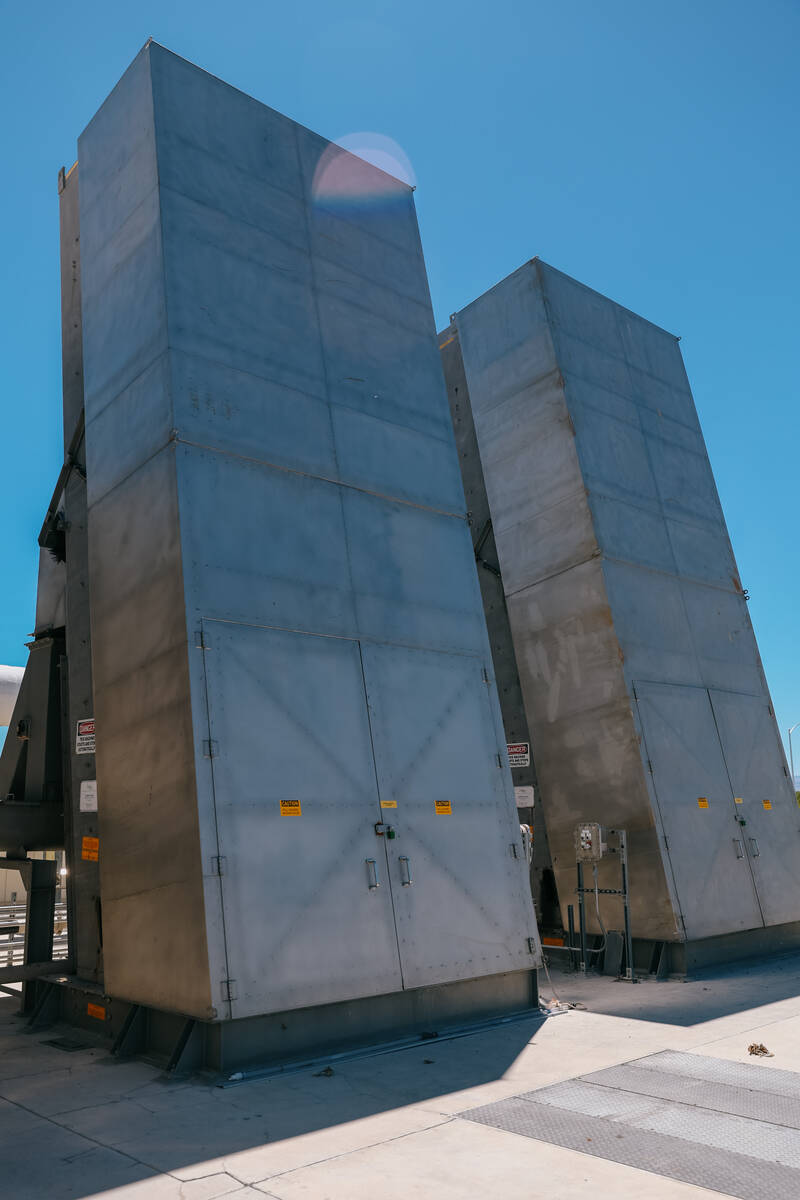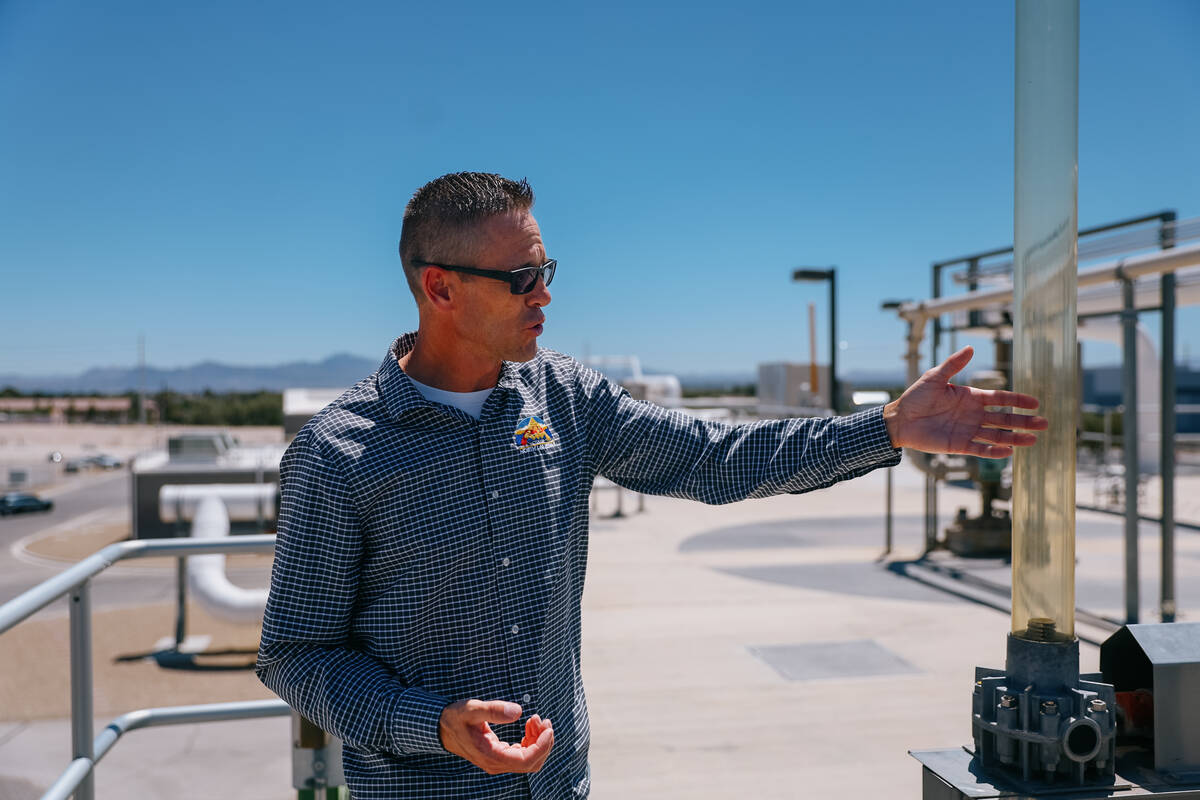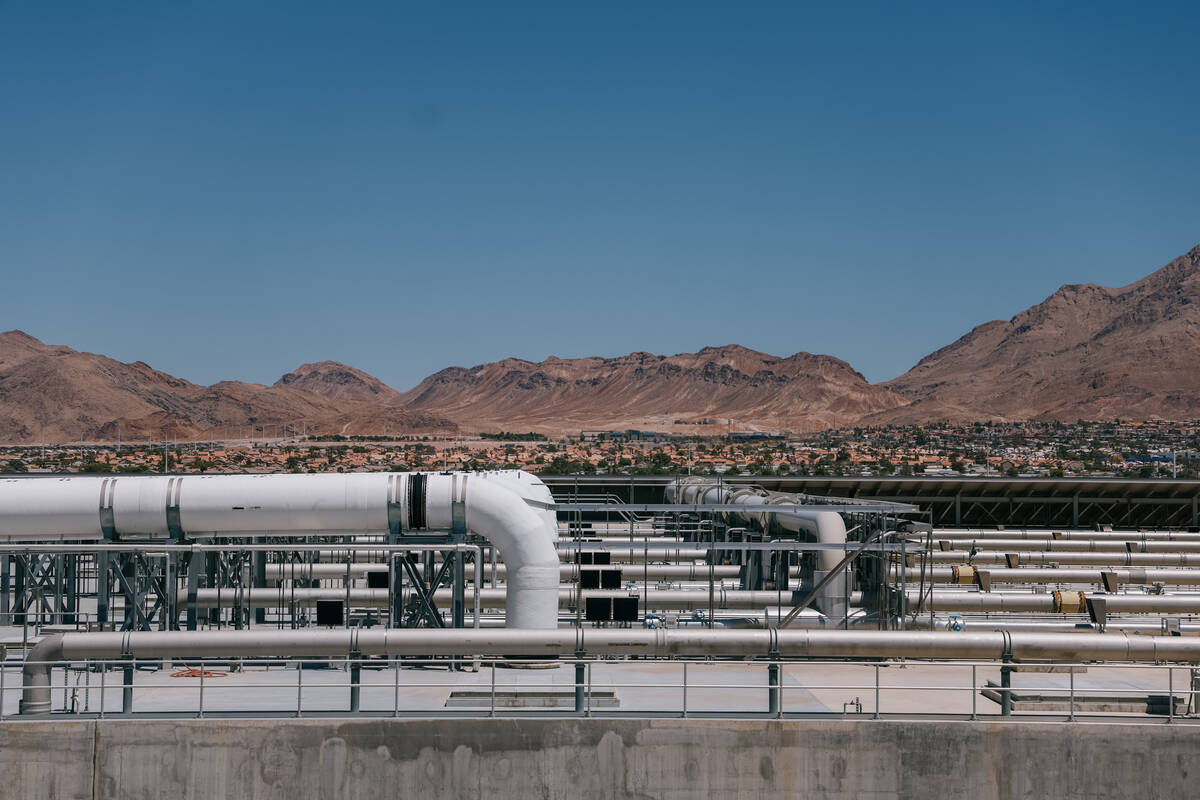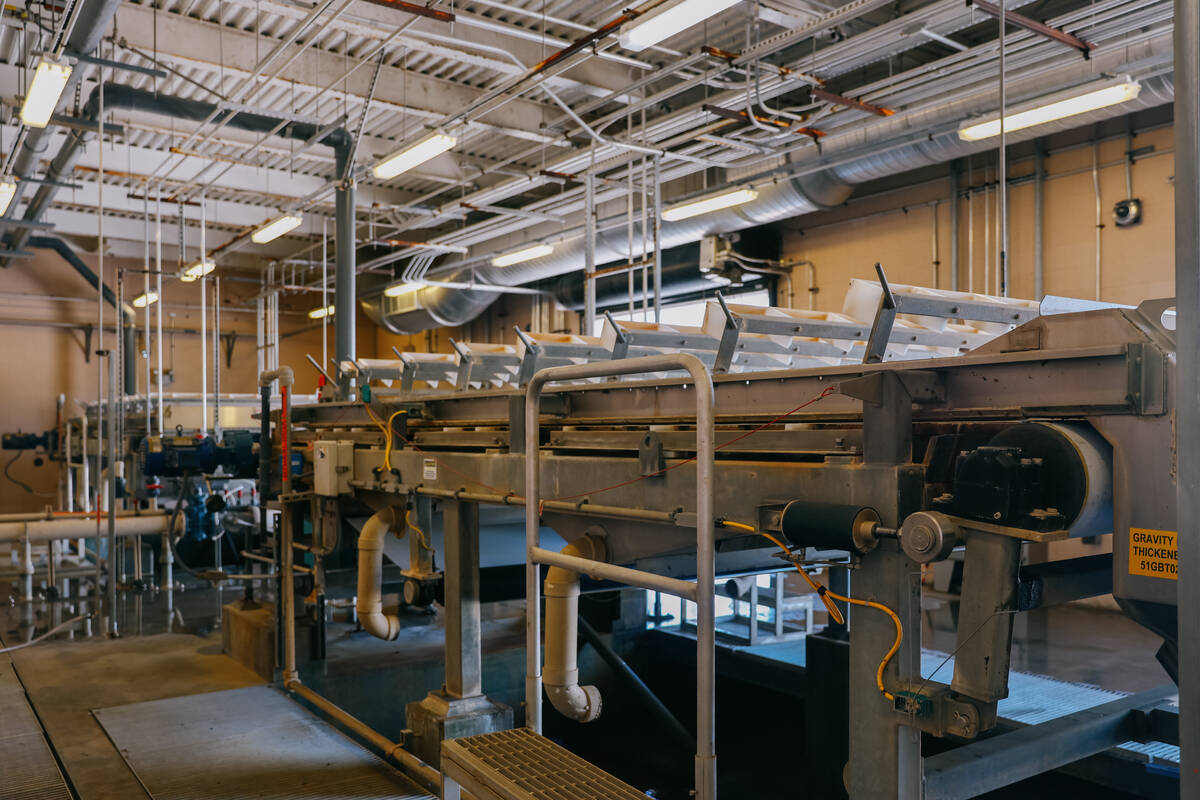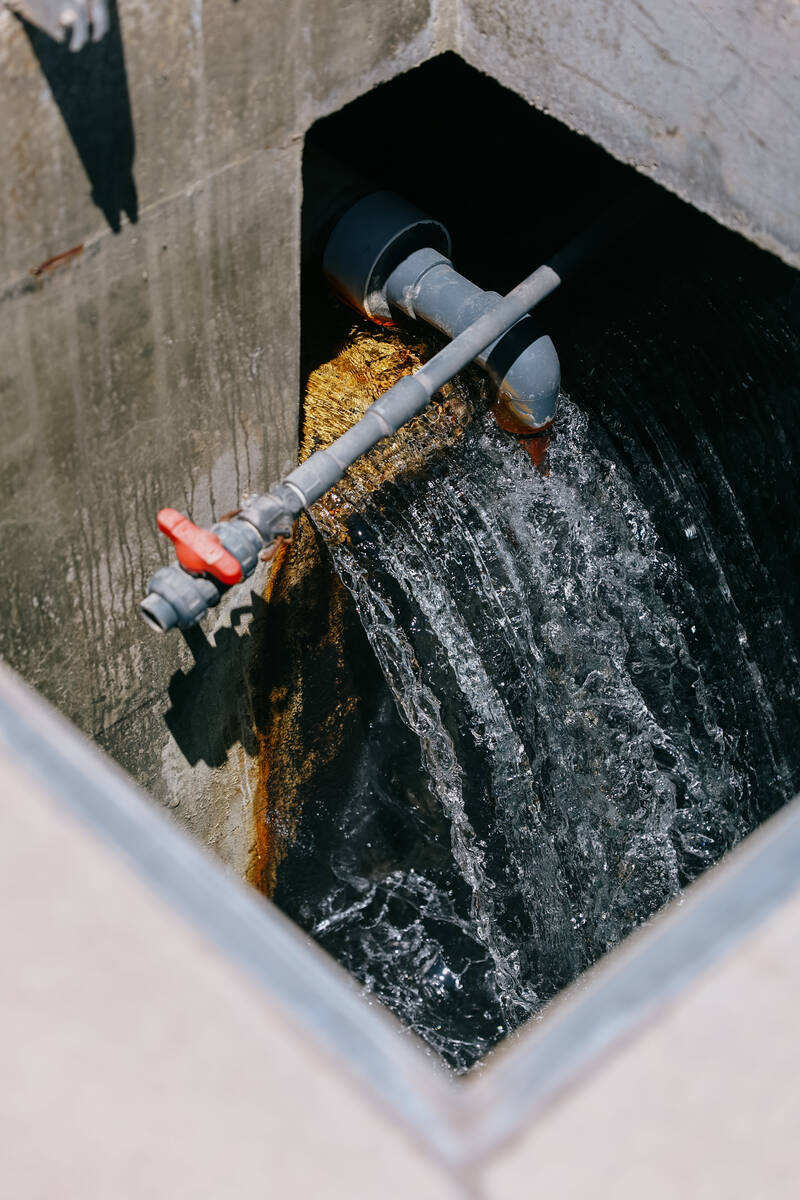Talking recycled water with a North Las Vegas Water Reclamation Facility supervisor
Twenty million gallons of wastewater flow through the North Las Vegas reclamation facility every day.
The water comes from drains connected to homes and businesses. And about four hours later, the precious element is purified and ready to be shunted back to Lake Mead.
The cycle repeats itself many times over, and this plant is crucial to keep the pipes gushing. Alan Wolfley is one of the supervisors tasked with ensuring the service goes uninterrupted.
“It’s nice to know that you have some form of input into the environment as a whole as we return all of our water back to Lake Mead, supplementing our drinking supply,” he said. “In the desert, water is a precious commodity, and North Las Vegas gets to take part in putting some of that water back into the environment and help preserve Las Vegas’ way of life.”
Wolfley, a Nevada native, settled into a water career after serving a mission with his church.
He had a water distribution position in Moapa Valley before transferring to the North Las Vegas Water Reclamation Facility as one of the first staffers when the city opened its own plant in 2011.
The city previously used water treated by the city of Las Vegas.
The plant sits on 40 acres with extra room to expand as the city continues to grow, Wolfley said. It currently has capacity to treat 25 million gallons of wastewater a day.
“One day, we anticipate — once we’re fully built out and the cities are at capacity — that we will look more like a 70-million-gallon a day plant versus a 25-million-gallon-a-day plant,” he said.
The facility is staffed by seven operators with three more being hired, three lab technicians, two supervisors and support staff, which includes three instrumentation technicians and six mechanics.
Wolfley explained that the reclamation process is mostly automated with staff on hand 24/7 in case of an emergency.
He sat down for an interview with the Review-Journal on July 30. The conversation has been edited for brevity.
How long does it take the water to travel here?
It depends on where it is in the water distribution system. But on average, it’s a two-hour window, probably from the time that somebody sends it down the drain at their home before it shows up here.
During high flows, we have a much shorter hourly-retention time versus low flows, when we have a much longer hourly-retention time.
Can you explain the water reclamation process?
Nothing happens here that doesn’t naturally occur outside in in the environment. We’ve just created an atmosphere to accelerate that process. All the microorganisms inside of our process are found in nature and soils and various river streams. We’ve basically consolidated them and then created an environment to, for lack of a better word, manipulate them into treating to the level at which we desire.
Things like rags, debris, sticks, and other things that aren’t organic can’t be treated. We go through a series of screening in order to remove those out to protect our equipment as well as so that they’re not occupying space inside of our bioreactors and creating nuisances there.
Have your views about water as a resource changed since you started your career?
Early on, you don’t really take into account or even ponder where this glass of water is coming from and you think it’s straight out of the spring. And what you probably don’t understand is that every glass of water you drink probably was drank seven times already.
And as it’s available, you think that it’s a never-ending resource that just naturally flows out of the ground and that there’s plenty of it for everybody as needed. After you get here, you look at what’s actually happening and where our water ultimately comes from. And you watch those resources degrade over time due to either climate-related issues or misuse or mismanagement of water. You start to realize that it’s not something that’s just going to be there forever, unless it’s something that we actually take care of and maintain properly.
What’s your advice for people on how to conserve the element?
I’m not a water conservationist by trade. Whatever advice I’ve got would probably come down to just good, common sense usage. If we’ve got leaks, let’s repair them. If we’ve got unnecessary water usages, let’s mitigate those. Obviously that’s going to make a difference in how much water we can conserve.
A lot of that is left up to the individuals on how they choose to conserve water: whether they they think it’s advantageous to convert to desert landscaping or use grass, for example.
What did you do before your career in water?
Maybe the career was always a hidden passion of mine. I graduated high school, I did a few things inside of my religious group and served a mission for The Church of Jesus Christ of Latter-day Saints. And when I came home from that, after a little bit of construction work and a college education, I went right into the water industry. By and large, I’ve spent the majority of my career in water and wastewater.
What’s do you tell people who might feel a little icky learning about the reclamation process about its cleanliness and safety?
Our guarantee is that there’s a whole lot of redundancy here and a lot of safe practices that take place in order to ensure public safety. And that’s obviously our No. 1 concern, as well as other factors like wildlife.
It’s a commodity that we have to rely on now and in the future, and it’s not something we have the opportunity or even the privilege to skimp on for ourselves.
To help keep everybody honest, we have in-house reporting. We collect and analyze data and use an external lab that verifies what we do in-house. We also have annual Nevada Division of Environmental Protections inspections. They show up on site and look at the plant, its conditions and our stored data. They pull samples to verify and ensure that there’s no harm to receiving water.
There are adverse consequences aside from public safety if someone were to not follow protocols. There are guardrails everywhere and there are huge deterrents.
Contact Ricardo Torres-Cortez at rtorres@reviewjournal.com.



